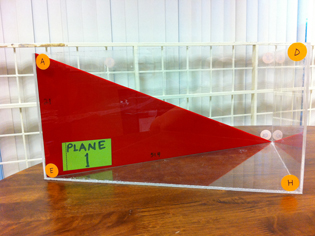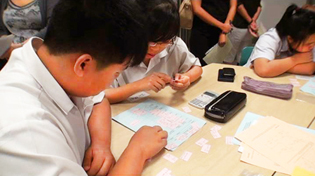Why Singapore’s English Teachers Should Embrace Singlish, Not Fight It
Is it time for Singaporean educators to embrace Singlish as a legitimate learning tool? What the Research […]
Read More
by Choy Chan Hong, Irving Quah, Tan Wen Dee and Toh Pui Yhing
If we want our students to learn from us, we may have to start learning from them. Through the lesson study process, our focus shifts from how we teach to how they learn, and a culture of observation and discussion is created.
Do our students really understand what they have learned? Are they able to transfer the knowledge and apply it to new situations? What difficulties do students face and how can we help them? As teachers, we need to be aware of our students’ learning behaviours. If they are not able to apply their learning correctly, it could be due to misconceptions (Carpenter & Lehrer, 1999). This awareness can help us adapt our teaching strategies to better impact our students’ learning.
In 2008, the Math Department at Clementi Town Secondary School adopted lesson study in our professional learning teams. Lesson study has taught us to understand our students’ misconceptions, the reasons behind these misconceptions, their physical and verbal responses during lessons, the quality of their work, their attitudes as well as how they interacted with their classmates.
 In our research lessons, we usually start off with a recapitulation activity to draw out any misconceptions of basic concepts. We address these before introducing new ones.
In our research lessons, we usually start off with a recapitulation activity to draw out any misconceptions of basic concepts. We address these before introducing new ones.
For example, in one of the research lessons, we used a cuboid tank and planes made from acrylic as a trigger activity to help the students visualize a trigonometry problem. Through the lesson observation and post-lesson discussions, we received immediate and valuable feedback that helped us to understand the students’ misconceptions and learning behaviours.
Based on this feedback, we revised our worksheet to provide clearer instructions for future lessons. The teacher who taught the lesson also made a conscious effort to guide the students through the activity by using probing questions.
From our ongoing journey in lesson study, we have gained some important insights on preparing effective lessons. We have found that it is important to:
 We also found that we need to enhance our students’ inquiry skills (the type and frequency of questions asked) to promote deep thinking. This would help students make sense of their learning and connect their learning to pre-existing knowledge (Piaget, 1964, 1969).
We also found that we need to enhance our students’ inquiry skills (the type and frequency of questions asked) to promote deep thinking. This would help students make sense of their learning and connect their learning to pre-existing knowledge (Piaget, 1964, 1969).
Guided by the learning points we had gleaned through lesson study, we have been able to enhance our teaching practices to improve students’ understanding of the lessons and achieve the lesson goals.
Over the years, strong collegial bonds have been forged between the teachers. Through the lesson study process, we have begun to establish a classroom culture of observing our students closely in order to improve student learning.
– Math teachers, Clementi Town Secondary School
Having benefited from the process of lesson study, we wanted to share our experience with fellow educators and allow them to have a first-hand experience of observing a public research lesson. We successfully implemented the first public research lesson in March 2011 with a Secondary 5 Normal (Academic) Math class.
The public lesson was attended by more than 50 participants, including school leaders and teachers from other schools. They had the opportunity to analyse the students’ behaviours in an authentic, real-time classroom setting, and discuss ways to further improve the instructional plan through an evidence-based and structured approach.
The post-lesson conferences are especially useful in sharpening our classroom instruction collectively in a non-intrusive manner. For this event, we had two eminent Japanese educators present, who provided rich insights for all participants. We hope more fellow educators can learn about lesson study through experiencing it themselves.
References
Carpenter, T. P., & Lehrer, R. (1999). Teaching and learning mathematics with understanding. In E. Fennema & T. A. Romberg (Eds.), Mathematics classrooms that promote understanding (pp. 19-32). Mahwah, NJ: Lawrence Erlbaum Associates.
Piaget, J. (1964). Development and learning. In R. Ripple & V. Rockcastle (Eds.), Piaget rediscovered (pp. 78-119). Washington, DC: U.S. Office of Education, National Science Foundation. Piaget, J. (1969). Science of education and the psychology of the child. New York: Viking.
Related article
Read a previous article about “Lesson Study in Action” in SingTeach Issue 29.